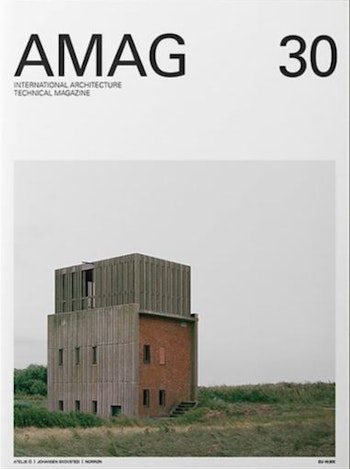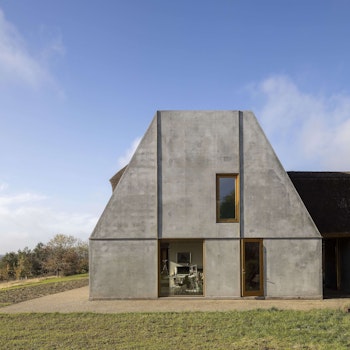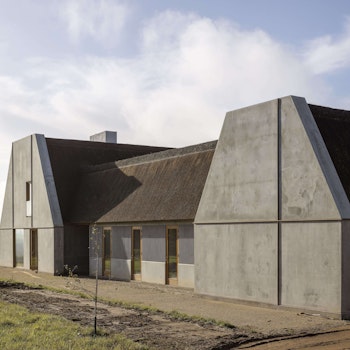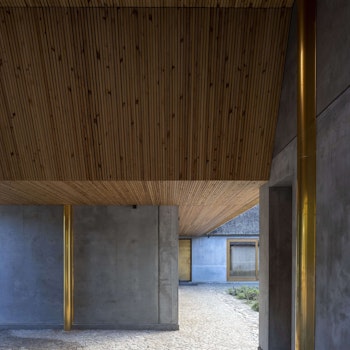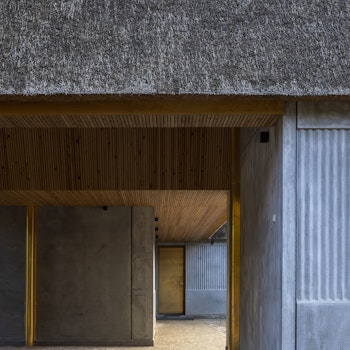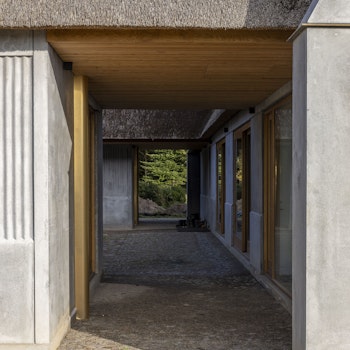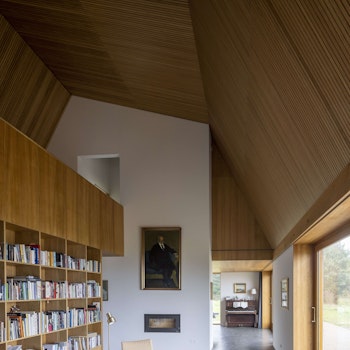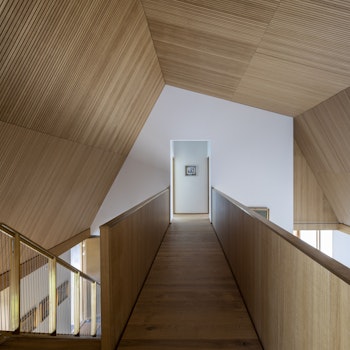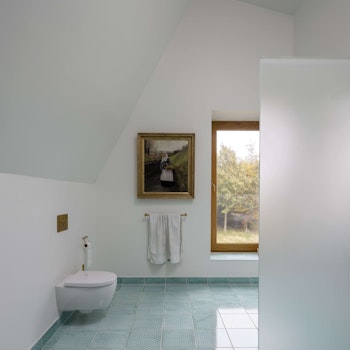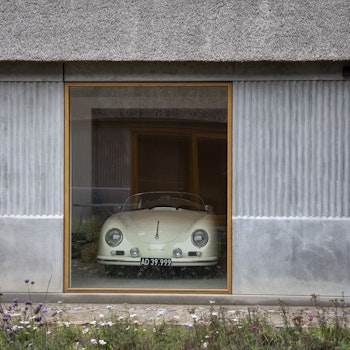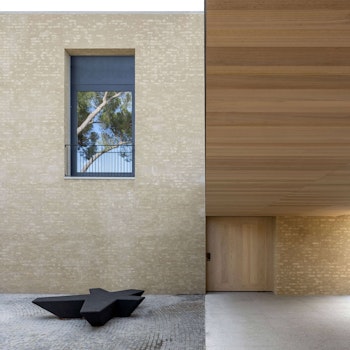ARCHITECT
NORRØN
PUBLICATIONS a.mag
The latest addition to Copenhagen-based NORRØN’s body of work is Åstrup Have - a new recreational farmhouse gazing at Haderslev Fjord and built upon the dream of the countryside. Coined around concepts of biodynamic food production, freely grazing animals and farm to table, Åstrup Have evokes the region’s vernacular building tradition and inquisitively reinterprets the traditional Danish farmhouse.
The remotely located building, surrounded by a scenic landscape of the rolling countryside, greets visitors through cut out gables arising from the ground and towering into the sky - particularly upon entry from the avenue. Organized around a central patio that unifies the wings of the building, Åstrup Have stands as a four-legged concrete structure with each leg equipped with an open gate through which the surrounding rural setting reveals itself.
The clustered volumes, organized as a band around the central courtyard, are constructed from raw concrete panels with brass-filled delation joints laid out as a thin grid in the facade. Resembling a golden relief carved into the raw panels of concrete, the brass-fillings soften the building, and as such resonates with local vernacular where metal fillings and objects once were embedded in the old facades and served as generous additions to the regional building culture. When hit by light, a fragile shadow play appears, resulting in a stark, yet atmospheric contrast between the raw and the refined.
Vernacularity
As a homage to local, Schleswig tradition, the steep roofunfolds as a thatched structure and a binding tissue joining theconcrete body beneath. The roof is inspired by the traditionalHaubarg buildings of the region. Characteristic to these is thatthey were all equipped with steep roofs, allowing for the storageof large quantity of hay that simultaneously gave the thatchedroofs a long life span as falling water would quickly divert at thesteep angle. The characteristic cutting of the roof profile alsoallows for solar panels, ventilation, chimneys, skylights, andmodern technology to be immersed, resulting in a clean, yetdiscrete expression.
Interior
The functional program of the building is partly dividedbetween residential spaces,andpartly culinaryfacilitieswithassociated programs. Each of the four legs is dedicated toeach oftheircorresponding programs. Towards the north, thebuilding consists of a garage and a workshop. Facing east, aguest wing where units of spartan decorated monk’s cellsappear.The main programs of the building, the culinaryfacilities, are distributed towardsthewest and consist ofproduction and educational spaces, a kitchen and a fooddistribution area. Supporting the guest and production facilities,is the main house with small living units and an orangerylocated in the southern leg of the building.
The interior spaces are composed as a series of diversespaces, varying in height and size, and throughout the building,a sacred and harmonized atmosphere has been sought. Inaddition, an oak-covering interior upholstery spanning from theceiling, via circulation and staircase furniture to window details,adds a coherent finish and natural warmth to the interior
source: NORRØN
YOU MAY ALSO LIKE

